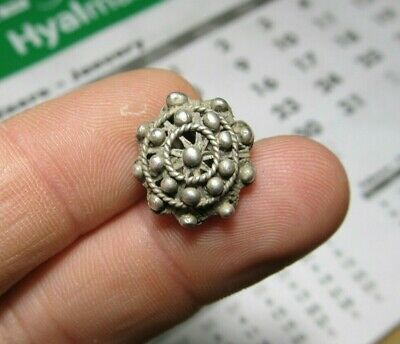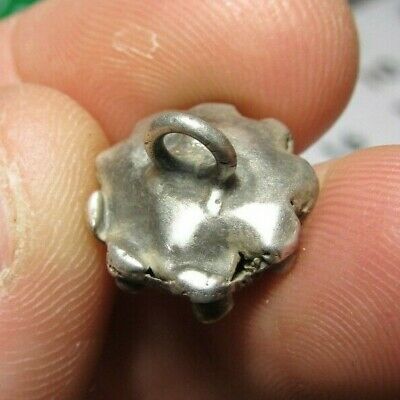-40%
AWESOME OLD MEDIEVAL SPANISH COLONIAL ROYAL "CHARRO" SILVER BUTTON 15-16 TH C
$ 26.4
- Description
- Size Guide
Description
AWESOME OLD MEDIEVAL SPANISH COLONIAL ROYAL TYPE CHARRO SILVER BUTTON 15-16 TH CENTURYWEIGHT:
2,1 grs
MEASURES:
15 mm
Outstanding
button with an incredible elaboration, spectacular silver filigree with great detail, very little
,
impressive museum piece, for the best collections. scarceeeee.
A charro button is a jewel belonging to the traditional and popular folklore of the province of Salamanca in Spain. The charro button has metallic materials, becoming in its format of more value in gold, although the most common is silver. It has a flattened round shape always with the same engraving on the front. It is one of the main pieces of what is known as "filigree Charra". This phrase is intended for all types of work in silver, such as: spoons, biscuits, cufflinks, brooches, earrings, key rings, etc.
The origins of the charro button are extremely dark and very difficult to explain, there are several theories about it. For its traditional form, some argue that it is a deformation of a solar disk Celtic character or celtíbero and could be used as an ornament or distinctive sign from the High Empire era back in the second and first centuries B.C.
It is known that certain small ornaments Roman charges used to join pieces of clothing, such as the cap and that were used for assimilation between Visigodos, so that the appearance of this button could be a deformation of those. However, the fact that its spatial scope is reduced to part of the current Province of Salamanca and south of Zamora suggests the button as some element of its own that subsisted to Muslim domination. Since the seventeenth century it is frequently used in charro suits as a piece of silver. Its relationship with some forms of damascene makes others think of possible Mudejar derivations, a fact that is sustained by the concentric character of the balls that form it and the absence of empty spaces. As a goldsmith's piece it would survive the Reconquista, although reduced to strictly rural areas (there are no plastic representations until the seventeenth century). In any case, it became very important as of that date as a distinctive element of the being and feeling of Salamanca.
Genuine button and natural photo.
100% GUARANTEED.
Check out my
other items
!
For
any
questions please
contact me
.
You can combine multiple items and pay only one shipping charges .
Greetings and good luck.....




















